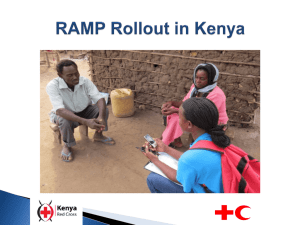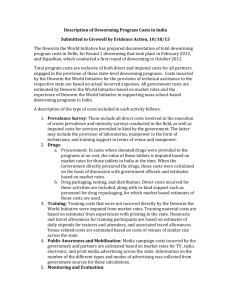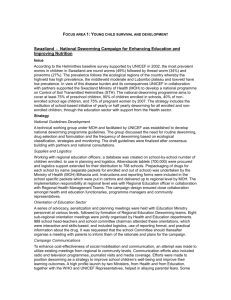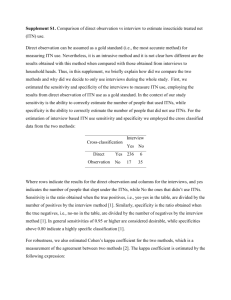Health Impact Evaluation Introduction - CEGA
advertisement
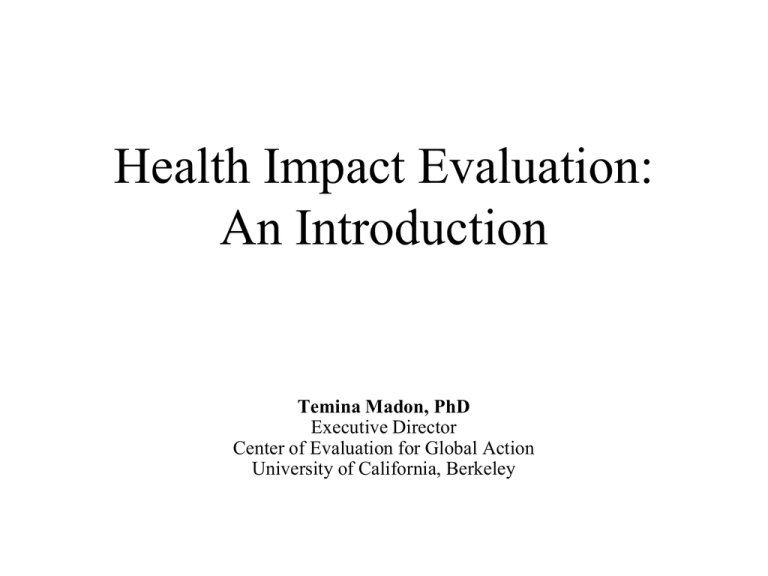
Health Impact Evaluation: An Introduction Temina Madon, PhD Executive Director Center of Evaluation for Global Action University of California, Berkeley What is Impact Evaluation? Identify a health need or target. • Proportion of children under 5 sleeping under ITN is < 6% and target is 60%. • Health worker absenteeism is reducing patients’ use of clinics (unpredictable access to care is a deterrent) What must be done to meet needs or reach targets? What interventions or services could be used? • Increase access to and proper use of ITNs • Decrease health worker absenteeism Which is the most robust program to use? • Pilot a few programs and measure their impacts. • Is program A able to reliably produce desired • Cost-free distribution of ITNs through schools, or door-to-door distribution. • Incentive-based payments to health workers conditioned on health coverage or on attendance. Why Impact Evaluation? • If you need evidence that a program works Does the program actually improve health outcomes? Does it reach the people in need? • Accountability to civil society • Accountability to funders • Ability to target a limited budget • If you want to improve the program over time • Results-based management • Demonstrate cost-effectiveness • If you want to scale up but need proof of concept Objectives of this Workshop • Understand how IE is related to M&E • Identify questions suitable for impact evaluation • Determine which indicators and designs to use • Understand impact evaluation methods • Develop an impact evaluation concept note for an intervention of your choice M&E vs. IE IMPACT OUTCOMES OUTPUTS INPUTS Effect on living standards - infant and child mortality, - prevalence of specific disease Access, usage and satisfaction of users - number of children vaccinated, - percentage within 5 km of health center Goods and services generated - number of nurses - availability of medicine Financial and physical resources - spending in primary health care M&E vs. IE • Are deworming treatments being delivered as planned? M&E • Does school-based delivery of deworming medication increase school attendance? IE • What is the correlation between access to health clinics and the proportion of children under 5 receiving routine M&E vaccinations? • Do house-to-house immunizations lead to an increase in the proportion of children under 5 who are immunized, relative IE to the level in communities with annual vaccination campaigns? Which costs less per child vaccinated? M&E vs. IE • M&E can often be started well after the program has been designed and implemented • IE generally needs to be considered at the outset of a program’s implementation or scale-up, because you need to build the evaluation into the design of the program M&E vs. IE • M&E allows you to guess how the program may have hurt or helped people. • IE allows you to measure the program’s effects directly. You will rule out every other explanation for the observed effects. What to Evaluate? • • • A health service program – ITN distribution at pre-natal clinics – Oral rehydration packets and education for new mothers – Deworming medicines in schools Health systems project – Health insurance plans – Clinic staff retention Local or federal health policy – Seatbelts law – Tobacco tarriffs • • • Behavior Change – Patient adherence to treatment – Improved care provided by health care provider – Community-wide adoption of prevention practices Services & Systems – Quality of Services – Cost-Effectiveness Health Outcomes – Maternal mortality – Child survival When to use IE? M&E can be used to fine tune a program’s design, but IE will: – Tell you whether or not the program is “worth the money” (Does it work?) – Guide results-based management – Improve communication with the public & civil society






